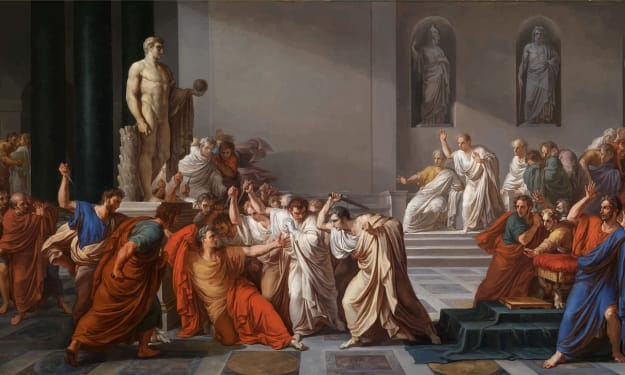Resurrexit Dominus: James Hanley's Forgotten Novel
By Doc Sherwood

Part One
Devoting an essay to the most obscure book by an already neglected author such as James Hanley (1897-1985) might call to mind Louis MacNeice’s words on minor poets: “those opinions which rank them high are based on a wish to be different or on lack of taste.” Nevertheless, at the risk of appearing to posses one or both of these attributes, I should like here to talk about that novel.
Published in 1934, its title is Resurrexit Dominus and its claim to be Hanley’s rarest work is secure. It and the 1937 autobiography Broken Water are the only two of that prolific writer’s books never to have been reprinted, but while the latter was available for general purchase and is relatively easy to buy second-hand today, Resurrexit Dominus was published privately and just one hundred and ten copies were ever made. Ninety-nine of these were available to subscribers, while the remaining eleven were for display purposes.
The book’s minuscule print run meant that for decades it was wholly forgotten. Edwards Stokes wrote in 1969 that he could locate only two other texts that mentioned it––The Letters of T. E. Lawrence, and Reginald Moore’s review of Hanley’s later novel No Directions in the May 1943 issue of Life and Letters Today––and that all the published lists of Hanley’s works in Who’s Who and Twentieth Century Authors omitted it. Since then Resurrexit Dominus has become slightly better known, and is discussed in more recent studies by Linnea Gibbs, Frank G. Harrington and John Fordham, but actual copies remain nigh-on impossible to find. Harrington owns one of the hundred and ten, and Oxford University’s Bodleian Library holds another, the only one I have ever seen. That is the copy I worked from for this paper.
An imposing volume, hard-bound in embossed white buckram and boasting over three hundred pages, Resurrexit Dominus makes for a challenging read. This has less to do with its size, and more with the astonishing tale Hanley tells within.

Part Two
Given the content of Resurrexit Dominus it’s unsurprising it had to be privately printed to bypass the censors. Like The German Prisoner, A Passion Before Death (both 1930) and Boy (1931) it reflects Hanley’s early tendency towards gothic excesses of horror, but not even those works disregard so flagrantly the strict 1930s conventions on inappropriate subjects for literature as Hanley’s rarest novel does.
It tells the story of Sheila Moynihan, a beautiful eighteen-year-old from the fishing village of Ballinasloe in Galway, sometime in the aftermath of the 1919-1922 Anglo-Irish War. Sheila and her fellow residents are facing starvation as, for the fifth time, the boats have returned with empty nets. This affects the Moynihan family particularly as they are blamed by the villagers for the state of affairs: some accusing Sheila’s father Seamus, a drunkard who has not been to Mass for twenty-two years, for cursing the waters through his irreligion; and some accusing Sheila herself because her habit of dancing naked on the seashore at midnight is thought to have had the same effect. Aside from facing poverty, famine and social ostracism, Sheila also has to single-handedly run the household as her mother is eight months pregnant.
Most disturbing of all, Sheila’s father routinely subjects her to physical and possibly sexual abuse (Hanley is not completely clear on this latter), and her two pubescent brothers, with whom she shares a bed, have developed a nightly habit of fondling her. George Orwell in Chapter Four of The Road to Wigan Pier writes that strict government regulations existed in the thirties to address the danger of incest in overcrowded family homes, but these are evidently not in force in Ballinasloe. It’s worth mentioning at this stage, however, that accurately representing social realities was seldom the young Hanley’s priority.
To help make ends meet, Seamus arranges for Sheila to be sent away to work as housekeeper for Liverpool-based Father Terrence Hooley, a college friend of the Ballinasloe priest Father Murphy. She is horrified at the thought of having to leave her home life in the village, though it’s hard to see quite why. However, it transpires she was right to be concerned, for Father Hooley quickly becomes consumed with savage sexual desire for her. He soon sees an opportunity to act on this, when observing Sheila passionately embracing the greater-than-lifesize sculpture of Christ on the Cross that hangs in his chapel.
Sheila’s behaviour, while partly an understandable reaction to loneliness and despair, might also recall Ursula Brangwen in D. H. Lawrence’s The Rainbow: a young woman equating the idea of Christ’s salvation and love with her own emerging sexual drives. But there are also connections here to key images in Irish Catholic iconography, particularly those drawn attention to by Stan Smith in Irish Poetry and the Construction of Irish Identity (2005). Smith observes that the eroticisation of the crucified and bloodied Christ belongs to a tradition of “Sacred Heart sadomasochism,” that glamorised, through images of blood-sacrifice, the struggle of the rebels against British imperialism. Hanley’s incorporation of these ideas, through Sheila, reminds us of the post-Rebellion, post-Great War setting of his novel.
Back to the story, and Father Hooley, by now almost delirious from his carnal urges, sends Sheila on an errand then hacks the sculpture of Christ down from the Cross, ties himself there in its place, and is hanging there waiting when Sheila returns and enters the darkened chapel to make her nocturnal devotions. Upon feeling Hooley move she believes him to be, as John Fordham puts it, “the risen Christ (the pun very much intended)”. She surrenders herself, and amid transports of self-destructive ecstasy, Hooley suffers a haemorrhage and dies. This recalls a similar incident in John Cowper Powys’ 1932 novel A Glastonbury Romance, and Hanley, a close friend of Powys, was familiar with the book.
When Sheila recognises the corpse before her and discovers that she has been ravished by the priest, rather than the Saviour, she loses her mind and flees. Eventually she is found wandering naked and confused in the streets of Liverpool, and is handed over to the Catholic Aid Society by the Police. They in turn put Sheila on the boat back to her home village, only for her to be swept overboard during a storm and drowned.
Meanwhile, back in Ballinasloe, Father Murphy has finally convinced Sheila’s father to attend Mass, and with renewed hope Seamus and his fellow fishermen have put out to sea in one final attempt to save their families from starving. The novel ends with their triumphal return, having filled their nets. Sheila’s mother, who is aware her daughter is on her way home but knows nothing about what happened in Liverpool, runs joyfully to meet her husband on the shore:
“Oh, Seamus! Seamus!” exclaimed his wife. “Thank God! Thank God!” She reached out her arms to him. “What fish you have! Isn’t God good?”
“Yes,” he replied, and lowered his head. “God is good.”
“An’ Sheila, my own Sheila!” cried Mrs. Moynihan. “Sure she’s coming home tomorrow. Oh Seamus! Seamus!” Then suddenly: “Oh Seamus! Darlin’! What’s the matter?”
“Sheila was in the first net we pulled in!” he said, and she saw him clench his hands, raise his head once more and stare out across the murmuring waters.

Part Three
Hanley told Charles Lahr in 1931 that he thought Resurrexit Dominus “the best book I have written so far,” but it is difficult to share the author’s own view of his novel’s greatness. For one thing, it is so full of plot-holes and continuity errors that it reads like a work-in-progress, or at the very least a singularly unpolished piece.
In Chapter Twelve, for example, Sheila contemplates how rough her hands are looking after “after only a few weeks in England,” when in fact she has been there for just under four days. She also has two first-meetings with the elderly church-warden Mr. Grogan, one in Chapter Five and then another in Chapter Six. The heavy dialect of the Irish characters, complete with phonetic spellings and dropped “g”s at the end of words, is used for their internal monologues and even, absurdly, the correspondence they write. On that note, letters sent between Liverpool and Ballinasloe take less than a day to arrive, despite the fact there is only one train a week to the tiny Irish village.
It is also jarring, though maybe not an error in itself, that early in the novel Hanley strongly implies that Fathers Murphy and Hooley are in cahoots, and have a long history of the one sending the other local girls for him to act out his depravities upon, but then contradicts this later in the book. This, as with many of the other inconsistencies listed above, gives the impression that the finished Resurrexit Dominus is two different drafts of the same novel inexpertly fused together. There is however no explaining why Father Hooley imagines he can pass himself off as his own sculpture of Christ, which is described as “fully ten feet high.” The chapel must be very shadowy indeed during the rape scene for Sheila not to notice something is amiss.
Such flaws are not uncommon in Hanley’s privately-published books of the thirties, which were for the most part composed without the services of an editor. In some of them it is possible to read into the quirks and peculiarities a deliberate attempt to subvert realist modes––certainly this is the case with Boy, a similar text in many ways to Resurrexit Dominus––but for the latter novel such an interpretation would be overgenerous. Its patchiness in the handling of plot and timescale seems to be the result of mere carelessness.
More troubling than these technically unprofessional elements is the content of Resurrexit Dominus. Whatever conclusions we might form about the worthiness of the central plot, there’s no avoiding the fact that in many passages Sheila’s emerging sexual drives are mishandled to near-disastrous effect. Again, an editor might have been able to help Hanley revise these scenes, which include two moments when Sheila seems to think about how much she enjoys sleeping with her lecherous brothers. Even more disturbing is Chapter Four’s sequence in which our heroine is set upon by a middle-aged pervert in a deserted country lane, for though she is ultimately appalled and fights the man off, the descriptions of her initial sensations during the assault verge on rapist-apologist:
“She experienced a kind of ecstasy. This wonderful feeling now descended upon her was a poetry expressing itself in silence.”
Sheila herself, as a working-class housemaid, displays certain correspondences with a middle-class male cult that, in the words of Janet Montefiore, regarded female menial workers as “objects of specifically bourgeois desires and fantasies associating working-class women with degrading bodily knowledge of dirt.” This conception, which emerged perhaps inevitably from Victorian sexual repression and class rigidity, found its most graphic expression in the mid-nineteenth century poet and diarist Arthur J. Munby, who took especial delight in his working-class servant girl and mistress Hannah Cullwick when she came to him filthy from her day’s labours. Fetishism of this kind was still in existence in the 1930s, and Storm Jameson, as Janet Montefiore writes, observes as much in her influential essay of 1937, ‘Documents’:
Storm Jameson, who was no fool, hinted at this structure of feeling when she sarcastically described the typical bourgeois writer’s narcissistic voyeurism: “What sights I am seeing! What smells I am enduring! There is the woman raking ashes with her hands and I am watching her!” The labouring woman is thus subjected to a masculine gaze which is fascinated by its own repulsion and desire for the knowledge which her fingers horribly have of dirt and discomfort––a knowledge which the male viewer can only imagine. The relationship between the woman’s fingers scraping the table and the observing man is not just the familiar opposition of woman as suffering material body versus man as speculative, active mind; the dirty cracks also imply a fantasy of the female genitals as repulsive, fascinating crevices, not fully knowable by the man. The image is directly comparable to the cold, filthy drainpipe penetrated by Orwell’s “slum girl.”
There are unmistakable echoes of all this in eighteen-year-old Sheila Moynihan, who, with her physical beauty, her heady combination of innocence and latent sexuality, and her tendency to stumble unwittingly from one lascivious interlude to another (in the first four chapters she is lusted after by her two brothers, the man in the lane, Father Hooley and possibly her father) does suggest a heroine of voyeuristic fantasy writing. At times this gives the impression that Resurrexit Dominus is no more than a wish-fulfilment pulp book for the heterosexual male gaze.

Part Four
Those few who have attempted to evaluate Resurrexit Dominus have, perhaps understandably, found it hard to look beyond these issues. Edward Stokes’s opinion of the novel is probably close to that of most readers when he states: “One is tempted to dismiss the whole book as a sort of ghoulish, macabre farce in the most questionable taste.” Though Stokes dedicates several pages of his study The Novels of James Hanley to a reasoned discussion of its content, he concludes: “I do not think that, however it is approached, the book can be considered a masterpiece…it is too confused in meaning and tone.”
Frank G. Harrington meanwhile mentions Resurrexit Dominus only in passing, commenting that it makes some interesting points about the unhealthiness of a celibate priesthood but is marred by an immaturity of form. John Fordham in James Hanley: Modernism and the Working-Class reserves his comments mostly for the circumstances leading up to Resurrexit Dominus’s publication, and of its content remarks simply that it is an “absurd fantasy” which, “had it been published, would not have served Hanley’s reputation well.”
The literary acquaintances to whom Hanley showed his work were likewise guarded in their praise. It’s true that Reginald Moore described Resurrexit Dominus as “one of our best books on the theme of modern love,” but his words were probably influenced by his friendship with Hanley: he and his wife Elizabeth Berridge were close to the author, who advised them to move to his own village of Llanfechain in Wales and helped them find a cottage there. Others were rather more frank, such as John Cowper Powys, who warned that the sexual content and religious imagery of Resurrexit Dominus made the book effectively unpublishable and likely to cause legal problems for its author. Meanwhile Richard Aldington, normally one of Hanley’s staunchest supporters, expressed “severe reservations” when consulted about publishing the book in America.
The fullest and most involved assessment by a contemporary came from T. E. Lawrence, who read and enjoyed most of Hanley’s early works and followed the development of Resurrexit Dominus in manuscript form. Lawrence considered the work in its full weight and was clearly impressed by some of its features. The character-drawing, he wrote Hanley in 1931, “is superb,” and he selected two scenes for singular acclaim: Father Hooley’s desire-fuelled, self-justifying soliloquy in the latter half of Chapter Six, and the dialogue in Chapter Seven where Hooley and Mr. Grogan discuss the intended rape:
It was unearthly and yet entirely real: really three-dimensional. I could feel all about the two creatures as they talked. You can make queerness come to life. Will you rave to hear that I said “Dickens” as I read it, though Dickens is not a man I can bear to read?
However, throughout their correspondence Lawrence’s praise, though effusive in places, is always accompanied by a note of caution. He was unable to read any greater significance into the tragedy of Father Hooley and Sheila, stating that it “does not feel inevitable, or typical: it is individual, perhaps accidental.” He also warned Hanley that the end result seemed to him a tale “too trivial for the vast tone of your treatment,” and he feared that readers would struggle to take seriously many of the book’s pivotal scenes, particularly the rape on the cross and the twist ending. With characteristic warmth and civility, Lawrence wrote:
…you will find that others besides me will take refuge in laughter against your over-dose of terror. I think the book is keyed too high. It is amazing: ingenious: unusual: and carries itself off. I do not think anybody but yourself could have conceived it, or would have attempted it, or could have gripped me, as I was gripped while I read it: but it is a criticism, surely, that I kept on crying out “NO, no” to myself even while I read. You held me, but did not carry me away; and the only justification for extravagance is that it should be wholly successful.
Lawrence’s appraisal of Resurrexit Dominus, though probably the most enthusiastic of the handful published, ultimately arrives at the same conclusion made by all other commentators: that it is too unconventional and flawed to be considered one of Hanley’s better works. It is difficult to argue against this, and it’s undoubtedly as much a factor in the novel’s obscurity as its tiny print run ever was.
We may never know what Hanley’s intentions were in writing this extraordinary novel. As with MacNeice’s minor poets, Hanley’s “ghost is gagged” on the subject. On that note, nor is any of the above is to hang on Hanley’s grave “a trophy such as, if solvent, he would himself have hung above himself.” I am in agreement with Stokes that no amount of dissecting Resurrexit Dominus can elevate that book to the status of masterpiece. Nevertheless, its long neglect is surely regrettable. If we are to evaluate in entirety the achievement of any author, we must give due consideration to all their works, not just those that have been canonized. Sometimes, as I hope to have illustrated in this paper, those items of juvenilia that might be termed unfinished or uneven can also yield up much of value to those who take the time to investigate them.
About the Creator
Enjoyed the story? Support the Creator.
Subscribe for free to receive all their stories in your feed. You could also pledge your support or give them a one-off tip, letting them know you appreciate their work.






Comments (2)
My Dear Doc; aka bff. I'm embarrassed to say that this is way above my pay-grade. As an A+ English student you'd give me a D- in this course; even if you graded on a curve. My English Professor Sis even gave us bags of Literature to read in our "Spare-Time!" Hmm, we were GearHeads. My only excuse is that I was closely monitored with my course studies via my Military deferments and (10) days out of school I was flown to the war zone; that's my excuse and I'm sticking to it. Joe, I'm just so glad that a new category has opened up for U'z - I will sincerely try to keep up from my 'Dunce' stool. You're terrific, J-Bro J-Bro
I'll have to check James Hanley out. But it doesn't surprise me you wrote about an underdog author. You supported me since August when I came back.